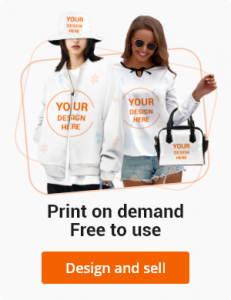Ein Dropshipping-Unternehmen zu gründen bedeutet nicht zwangsläufig, die eigene Marke aufzugeben. Viele neue Dropshipper glauben, dass Branding tiefe Taschen und große Teams erfordert. Doch die Realität sieht anders aus: Die digitale Welt von heute bietet unzählige Möglichkeiten, eine herausragende Marke aufzubauen, ohne Geld zu verbrennen.
Online-Shopping boomt, und der Wettbewerb ist hart. Es ist ein goldener Moment für Dropshipping, aber auch ein Weckruf: Nur attraktive Produkte anzubieten, reicht nicht mehr aus. Kunden sind wählerisch und suchen nach Marken, denen sie vertrauen.

Seitenübersicht:
Warum Branding Ihre Geheimwaffe ist
Definieren Sie Ihre Markenidentität
Lassen Sie Social Media für sich arbeiten
Inhalte, die Vertrauen schaffen
Das Kundenerlebnis ist Ihre Marke
Wählen Sie Lieferanten, die Ihre Marke unterstützen
Zusammenfassung: Bauen Sie eine Marke auf, die haften bleibt
Warum Branding Ihre Geheimwaffe ist
Wenn Sie einen Dropshipping-Shop ohne eigene Marke betreiben, sind Sie nur ein typisches Gesicht in der Masse. Die Folge? Preiskämpfe, geringe Gewinne und der Kampf um die Kundenbindung.
Branded Dropshipping dreht das Drehbuch um. Jetzt verkaufen Sie Vertrauen, Stil und eine Geschichte – nicht nur ein Produkt. Märkte zeigen Kunden sind gerne bereit, mehr für eine Marke zu bezahlen, an die sie glauben. Diese Premium-Preismacht ist genau das, was erfolgreiche Dropshipper strategische Preispunkte festlegen, die ihre Gewinnspannen maximieren, ohne Kunden zu verschrecken.
Eine Marke erzählt gute Geschichten über ihre Produkte und schafft Identitäten, mit denen sich ihre Kunden verbunden fühlen. Und Kunden sind bereit, immer wieder zu kommen, allein schon aufgrund der Kunden-Marken-Bindung, die sie im Laufe einiger Erfahrungen aufgebaut haben.
Definieren Sie Ihre Markenidentität
Identität sagt, wer Sie (Marke) sind. Und durch den Kauf von Produkten mit Identität können Kunden mit Ihrer Marke in Resonanz treten und zeigen, wer sie sind. Um die Identität Ihrer Marke festzulegen, beginnen Sie mit den Grundlagen:
| Element | Beschreibung & Strategie |
|---|---|
| Markenpersönlichkeit | Ton und Stil; passen Sie sich Ihrem Publikum und Ihren Grundwerten an. |
| Markenwert | Was macht Ihr Geschäft einzigartig: Service, Kuratierung oder Umweltfreundlichkeit. |
| Visueller Stil | Farben, Schriftarten, Bilder; plattformübergreifend beibehalten. |
| Markengeschichte | Ihre Herkunft, Mission und Motivation in wenigen Zeilen. |
| Slogan | Kurzer Satz, der den Geist und Wert der Marke einfängt. |
| Visuelle Konsistenz | Einheitliche Logos, Farben und Stile online und auf der Verpackung. |
| Markenstimme | Ton aller schriftlichen Inhalte – freundlich oder professionell. |
Diese Tabelle bietet Dropshipping-Unternehmern eine klare, detaillierte und praktische Anleitung zum Aufbau einer konsistenten und authentischen Markenidentität.
Halten Sie es einfach und bleiben Sie authentisch, denn Kunden erkennen Fälschungen schon von Weitem.
Lassen Sie Social Media für sich arbeiten
Social-Media-Plattformen wie Instagram, TikTok und Pinterest eignen sich hervorragend, um Ihre Dropshipping-Produkte.
Teilen Sie dort Ihre unwiderstehlichen Produktbilder, kurze Aufnahmen hinter den Kulissen und authentische Kundenreferenzen, um eine Verbindung herzustellen.
Erstellen Sie auf Facebook eine Seite oder Gruppe und veröffentlichen Sie Funktionen, Updates und Tipps zu Produkten.
Sprechen Sie die Menschen auf eine Weise an, die sie nützlich oder interessant finden, und nicht auf werbende Weise. Zeigen Sie zuerst Ihren Wert, bauen Sie Ihr Vertrauen und Engagement auf und verkaufen Sie dann.
Inhalte, die Vertrauen schaffen
Content-Marketing strapaziert Ihr Budget.
Hier sind einfache Inhaltsideen, mit denen Sie Ihrer Marke ein authentisches und wertvolles Gefühl verleihen:
- Hilfreiche Blogbeiträge: Schreiben Sie kurze, praktische Beiträge (wie Trainingstipps oder Tierpflege), die echte Fragen beantworten.
- Videoinhalte: Unboxings, kurze Demos und mit Ihrem Telefon gefilmte Anleitungsclips stärken das Vertrauen in Ihre Produkte.
- E-Mail-Updates: Bieten Sie für Anmeldungen einen kleinen Vorteil (Rabatt oder Trinkgeld) an und teilen Sie dann hilfreiche Inhalte gemischt mit gelegentlichen Werbeaktionen.
- Benutzerinhalte: Zeigen Sie Kundenfotos oder -bewertungen, um die Nutzung im echten Leben zu zeigen und Glaubwürdigkeit aufzubauen.
- Soziale Medien: Posten Sie regelmäßig nützliche oder unterhaltsame Inhalte, nicht nur Verkaufsgespräche.
Das Kundenerlebnis ist Ihre Marke
Ein Logo schafft keine Loyalität – Kundenerlebnisse schon.
Marke = Produkte + Dienstleistungen.
Gute Produkte, klare Produktbeschreibungen, detaillierte Bilder und ehrliche Größenangaben helfen, Erwartungen zu wecken. Schnelle, freundliche Antworten verwandeln Probleme in Erfolge. Fügen Sie Ihren Paketen außerdem einfache Dankeskarten oder Beilagen hinzu, um ihnen eine persönliche Note zu verleihen. Diese kleinen Momente hinterlassen einen bleibenden Eindruck.
Wählen Sie Lieferanten, die Ihre Marke unterstützen
Und am wichtigsten: Wählen Sie einen zuverlässigen Lieferanten.
Arbeiten Sie als Dropshipper mit Lieferanten wie EPROLO, die Produkte mit stabiler Qualität anbieten und White-Label oder benutzerdefinierte Verpackungsoptionen, sodass Ihre Produkte mit Ihrem Branding ankommen – nicht mit ihrem.
Und überprüfen Sie die Proben regelmäßig, da eine fehlerhafte Lieferung Monate harter Arbeit zunichte machen kann.
EPROLO macht Branding einfach
So hilft EPROLO Dropshippern Bauen Sie eine solide Marke auf ohne Stress:
- Produktzugriff: Ein umfangreicher Katalog, bereit für die Eigenmarkenkennzeichnung.
- Benutzerdefinierte Optionen: Laden Sie Ihr Logo und Ihre Verpackungsdesigns hoch. EPROLO macht sie wahr, vom Etikett bis zur Geschenkkarte.
- Keine Mindestmengen: Beginnen Sie mit geringen oder keinen Bestellanforderungen. Testen, verfeinern und skalieren Sie Ihre Marke, während Sie wachsen.
- Ein Dashboard: Verwalten Sie Beschaffung, Branding, Bestellungen und Versand von einem Ort aus. Kein Hinterherjagen mehrerer Kontakte.
EPROLO kümmert sich um die Arbeit hinter den Kulissen, damit Sie sich auf das Wachstum konzentrieren können.

Zusammenfassung: Bauen Sie eine Marke auf, die haften bleibt
Beim Dropshipping geht es nicht nur um Produktsuche und Werbung – es geht darum, Kunden etwas Echtes zu bieten, mit dem sie sich identifizieren können. Konsistenz, Authentizität und Partnerschaften (wie EPROLO) ermöglichen Ihnen den Aufbau einer Marke auch mit kleinem Budget.
Jede große Marke hat klein angefangen. Ihre Geschichte könnte die nächste sein.
FAQs zum Thema Markenaufbau mit kleinem Budget:
Ist es möglich, meinen eigenen Namen auf generischen Dropshipping-Produkten zu verwenden?
Ja, aber es kann etwas anspruchsvoller sein. Beginnen Sie mit großartigem Service und informativen Inhalten. Wenn Sie wachsen, suchen Sie nach Eigenmarkenoptionen, auf denen Sie Ihren Namen und Ihre Verpackung platzieren können.
Wie lange dauert es, bis sich Einzelpersonen an eine Marke erinnern?
Es braucht Zeit. Erste Anzeichen, wie mehr Stammkunden, sind nach 3–4 Monaten sichtbar. Echte Markenbekanntheit dauert in der Regel 6–12 Monate, abhängig von Ihrer Beständigkeit.
Wie unterscheidet sich Marken-Dropshipping vom regulären Dropshipping?
Normales Dropshipping bedeutet generische Produkte und Verpackungen. Branded Dropshipping bedeutet, dass Sie Ihren Namen darauf setzen und ein konsistentes Erlebnis schaffen können, das Vertrauen schafft.
Muss ich meine Marke sofort als Marke schützen lassen?
Keine Eile. Testen Sie Ihre Idee zunächst und steigern Sie den Umsatz. Sobald Ihr Unternehmen etabliert ist – in der Regel nach 6–12 Monaten – sollten Sie sich um die Eintragung eines Markenzeichens kümmern, um Ihre Marke zu schützen.







